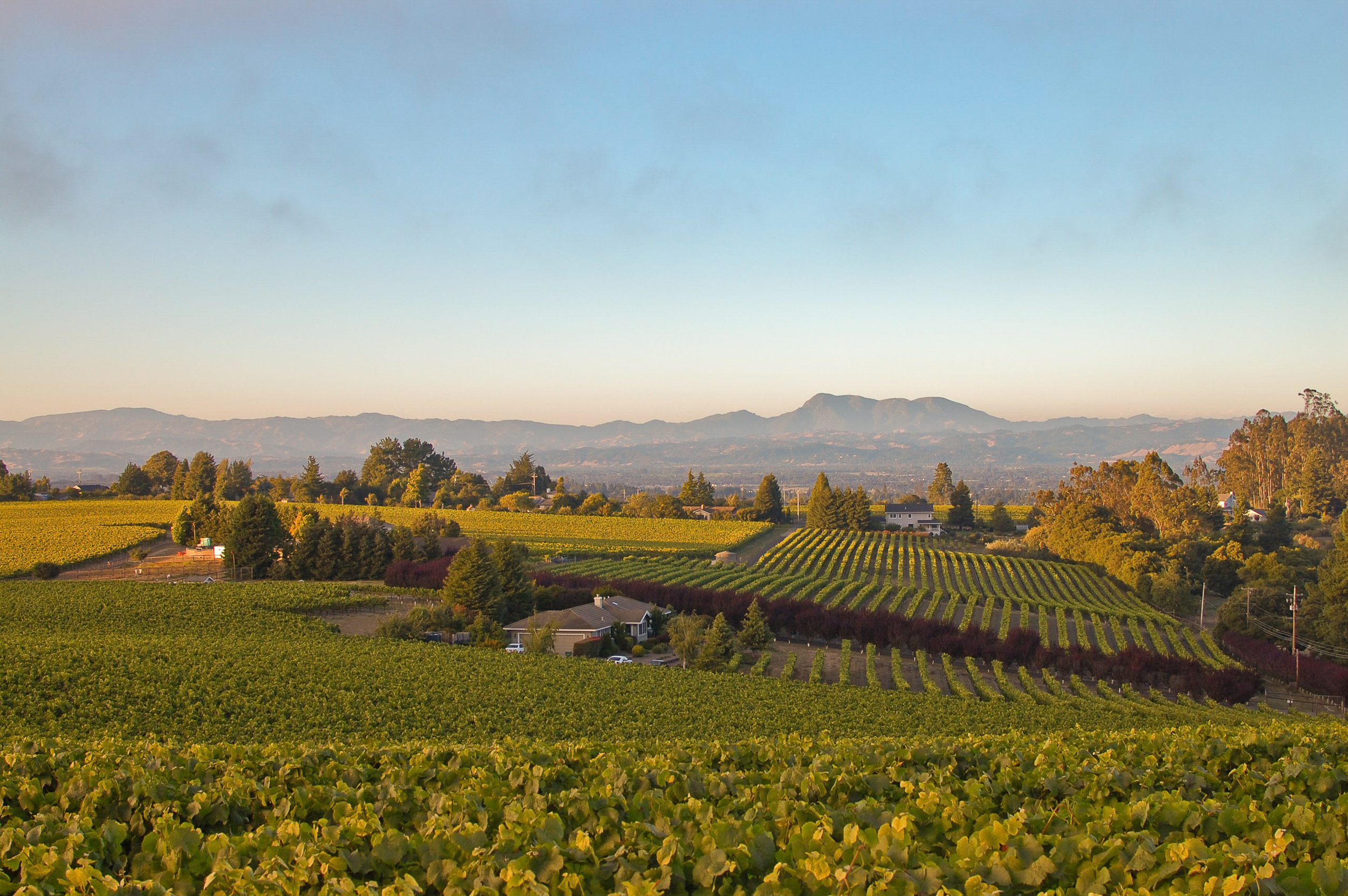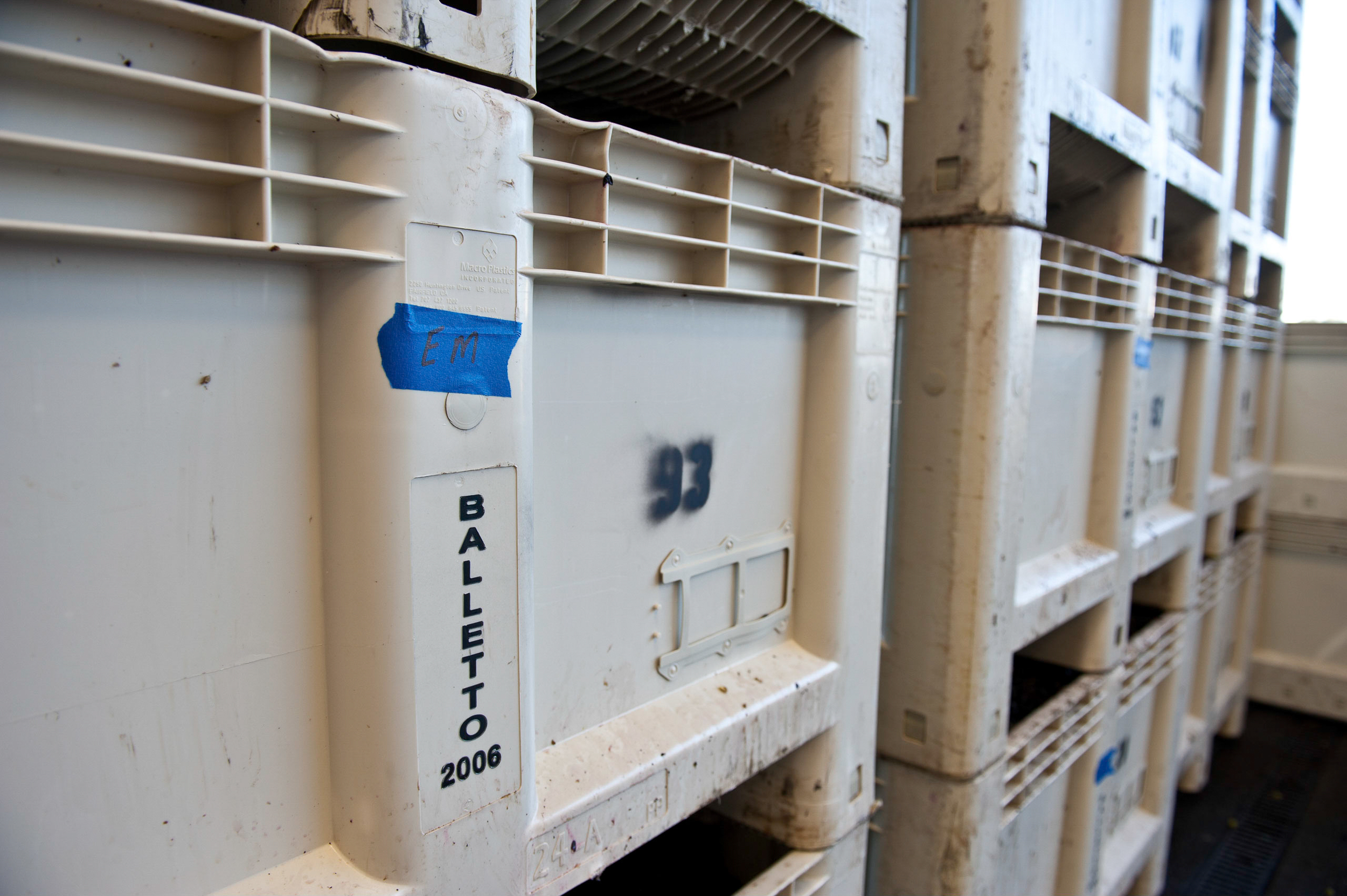About Burnside Road Vineyard
In 1988, John and Terri Balletto, who were in the vegetable business at the time, decided to purchase some land in the Sebastopol Hills to grow their vegetables in the wintertime. Coming off of multiple floods on their land in the Santa Rosa plains area, losing multiple rotations of crops, this was an important decision. John grew up in Sebastopol and had always had a fondness for the property off of Burnside Road and it just so happened that apple farmer, Darrel Hurst, who owned Twin Hills Apple Ranch was selling a couple of parcels in that area.
We farmed vegetables on this land for a few years but realized that this beautiful hillside ranch would be better suited for grapes. Fellow farmer Warren Dutton confirmed this decision, and this led us to planting our first 20 acres of grapes in 1994. Chardonnay, Pinot Noir, some Pinto Gris and always an experimental farmer, John decided to try 5 rows of Merlot. It was too cold for the Merlot, so that was pulled out and more Pinot Gris was put in. All the grapes were sold to a local winery. Then in 2001, we had our produce packing facility permitted to be a winery and brought in our first grapes – Burnside Chardonnay and Burnside Pinot Noir for our own label – enough for about 300 cases each. “That was the beginning of the Balletto brand.” - Winemaker, Anthony Beckman
LOCATION: Burnside Road Vineyard is located on a rolling to steep hilltop site with elevations just under 1,000 feet and about 10 miles from the Pacific Ocean. Its unsheltered hilltop location leaves the vines exposed to wet fog at night and early mornings, chilly ocean wind, and morning and afternoon sun depending on the slopes. This unique micro climate translates to one of those rare places where the farming is difficult, but the grapes can ripen slowly to produce wines of depth and distinction.
Sebastopol Hills sea-air micro-climate and unsheltered vineyards that allows the grapes to ripen slowly to produce wines of depth and distinction.
• Hillside erosion control
• Extreme gopher pressure
• Deer fences required – Deer love eating vines
• Limited water – plan accordingly
• Wet fog early morning and evenings
• Chilly ocean wind
• Morning / afternoon sun exposure depending on slopes
About Emerson Block Vineyard
Surrounded on three sides by Balletto's Burnside Road Vineyard. In the late 1990s John Balletto approached the Emerson family and asked if they wanted to plant their small parcel while he was expanding the Burnside Vineyard. The Emersons agreed, and Balletto has been farming and making wine from this vineyard ever since. Unlike most of the rest of the Pinot Noir at Burnside Vineyard, the Emerson block runs on a north-east/south-west row orientation and slopes toward the south west, giving it excellent exposure. The climatic factors of fog, wind, cool maritime temperatures and the illustrious Goldridge soil gives the grapes an extended time on the vine that allows the tannins and flavors to mature while the cool weather, wind and perfect soil slowdown grape sugar production and keep the natural acidity from respiring. The resulting wines have finessed tannin structure, lower alcohol and higher natural acidity, as demonstrated in our highly acclaimed single vineyard Emerson Block Burnside Road Pinot Noir bottling.
Sebastopol Hills sea-air micro-climate and unsheltered vineyards that allows the grapes to ripen slowly to produce wines of depth and distinction
• Hillside erosion control
• Extreme gopher pressure
• Deer fences required – Deer love eating vines
• Limited water – plan accordingly
• Wet fog early morning and evenings
• Chilly ocean wind
• Morning / afternoon sun exposure depending on slopes
About Mary's Vineyard
This magnificent eight-acre, hillside vineyard is located about 10 miles from the cooling influence of the Pacific Ocean and is planted entirely to Pinot Gris. The soils are the famed Goldridge series, and the cool, foggy and windy climate is perfect to make delicate and focused Pinot Gris. On all sides, it's surrounded by world-class (and wildly expensive) Pinot Noir and Chardonnay vineyards in the Sebastopol Hills region of the Russian River and Sonoma Coast. And this is exactly where Pinot Gris deserves to be planted: in the heart of one of the best cool-climate viticulture regions in the world.
• World-wide, Pinot Gris is rarely planted at such an incredible site
• Sebastopol Hills sea-air micro-climate and unsheltered vineyards that allows the grapes to ripen slowly to produce wines of depth and distinction
• Hillside erosion control
• Extreme gopher pressure
• Deer fences required – Deer love eating vines
• Limited water – plan accordingly
• Wet fog early morning and evenings
• Chilly ocean wind
• Morning / afternoon sun exposure depending on slopes
About Cider Ridge Vineyard
Located at 950 - foot elevation about 10 miles from the Pacific Ocean, Cider Ridge Vineyard has East - facing slopes and near - perfect sun exposure that contrasts its cold, foggy and windy location. The resulting wines have intense flavors and aromas with a defining structure.
Both the Sebastopol Hills sea-air micro-climate as well as the North Eastern Facing slopes and Goldridge soils
• Cider Ridge Chardonnay
• Twin Ridges Chardonnay
• Cider Ridge Pinot Noir
• 18 Barrel Pinot Noir
• Hillside erosion control
• Extreme gopher pressure
• Deer fences required – Deer love eating vines
• Limited water – plan accordingly
About Sexton Hill Vineyard
Sexton Hill Vineyard, with its steep hillsides, Goldridge soil and a non-traditional (think cold) northern exposure, lies about 10 miles from the cooling influence of the Pacific Ocean. As the vineyard is protected from direct afternoon sun, the grapes planted here produce concentrated and structured wines.
With a 40% slope on one side and a ridge top plain on the other it makes for a special site for Chardonnay and Pinot Noir
• Sexton Hill Pinot Noir
• Sexton Hill Chardonnay
• Twin Ridges Chardonnay
• Russian River Valley Chardonnay
• Russian River Valley Pinot Noir
• 18 Barrel Pinot Noir
• Crawler tractor required on steep hill facing Sexton Road
• Hillside erosion control
• Extreme gopher pressure
• Deer fences required – Deer love eating vines
• Limited water










































































